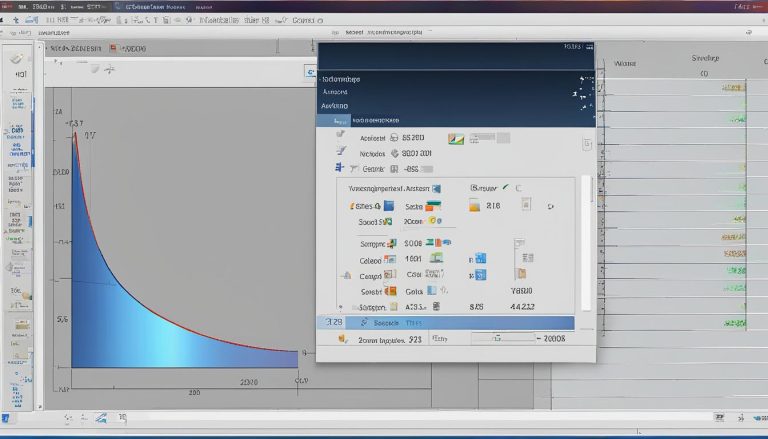Hello, readers! In this article, I will provide a detailed insight into ReplicaSet in Kubernetes and its significance in container orchestration. ReplicaSet plays a crucial role in maintaining a stable set of replicated pods within a Kubernetes cluster, ensuring load balancing, reliability, and scalability for applications.
Before diving into the concept and functionality of ReplicaSet, let’s start by defining what exactly it is. ReplicaSet (RS) is a Kubernetes object that ensures a specified number of replica pods are continuously running within the cluster. It achieves this by using a pod template to create new pods when existing ones fail and a replica count to maintain the desired number of replicas.
Now that you have a basic understanding, let’s explore how ReplicaSet works in Kubernetes.
How does a ReplicaSet work in Kubernetes?
ReplicaSets are responsible for maintaining the desired state of a set of pods in Kubernetes. They continuously monitor the pods and ensure that the specified number of replicas are running at all times. If a pod fails or becomes inaccessible, the ReplicaSet schedules a replacement pod to maintain the desired state.
To identify which pods they are responsible for, ReplicaSets use selectors. These selectors define the criteria by which a ReplicaSet identifies the pods it manages. Additionally, the replica count determines the number of replicas the ReplicaSet maintains.
It’s important to note that ReplicaSets offer more flexibility and support set-based selectors compared to their predecessor, ReplicationControllers.
Working with ReplicaSets in Kubernetes
Working with ReplicaSets involves scaling them up or down to adjust the number of running replicas. This can be done by modifying the replicas field in the manifest file and applying the changes.
Deleting ReplicaSets when they are no longer needed is also a straightforward process using the kubectl delete command.
When scaling up, the ReplicaSet creates additional replicas based on the pod template, while scaling down removes unnecessary replicas, ensuring efficient resource management.
It’s worth mentioning that there are alternative Kubernetes objects, such as Deployments and StatefulSets, which provide additional features and address specific use cases.
Use Cases for ReplicaSets in Kubernetes
ReplicaSets are widely used in Kubernetes for various purposes. They are especially valuable for application scaling, as they allow multiple instances of a pod to handle increased traffic and prevent overload.
Load balancing is another essential use case for ReplicaSets. By routing traffic to different instances of a pod, they distribute the workload effectively.
Furthermore, ReplicaSets contribute to fault tolerance, ensuring that applications remain available even if one of the replicas fails or becomes inaccessible.
Lastly, ReplicaSets play a crucial role in resource management by automatically replacing failed pods and scaling instances based on resource availability.
How does a ReplicaSet work in Kubernetes?
ReplicaSets in Kubernetes are responsible for maintaining a desired state of a set of pods. They continuously monitor the pods and ensure that the specified number of replicas are running. When a pod fails or becomes inaccessible, the ReplicaSet schedules a replacement pod to maintain the desired state. The ReplicaSet uses selectors to identify which pods it is responsible for and the replica count to determine the number of replicas to maintain. This functionality was previously handled by the ReplicationController, but ReplicaSets offer more flexibility and support set-based selectors.
Pods in a ReplicaSet have a lifecycle that goes through various phases, including Pending, Running, and Terminating. When a ReplicaSet is first created, it creates and starts the specified number of replica pods based on the pod template. These pods are then assigned to nodes in the cluster and transition to the Running state. The ReplicaSet continuously monitors the health of the pods to ensure they are functioning properly. If a pod fails a health check or becomes unresponsive, the ReplicaSet terminates the pod and schedules a new replacement pod to take its place.
Overall, ReplicaSets provide a powerful mechanism for managing and maintaining the desired state of pods in a Kubernetes cluster. They offer automatic scaling and self-healing capabilities, ensuring that the specified number of replicas are always running. By leveraging ReplicaSets, organizations can effectively manage their applications, achieve load balancing, and improve fault tolerance.
“ReplicaSets in Kubernetes provide a robust solution for maintaining a stable set of replica pods. They offer flexibility and scalability, automatically replacing failed pods and ensuring that the desired number of replicas are always running. With their support for set-based selectors and advanced health monitoring, ReplicaSets are a critical component for managing and scaling applications in Kubernetes.” – Kubernetes expert
Pod Lifecycle in a ReplicaSet
The lifecycle of a pod in a ReplicaSet goes through several phases:
- Pending: The pod is in the process of being scheduled and assigned to a node.
- Running: The pod has been assigned to a node and is running.
- Terminating: The pod is being terminated and removed from the cluster.
ReplicationController vs ReplicaSet
Before ReplicaSets were introduced, ReplicationControllers were used to ensure a desired number of replicas were running. However, ReplicaSets offer additional features and flexibility over ReplicationControllers. ReplicaSets support set-based selectors, allowing for more complex pod matching criteria. They also provide more control over scaling behaviors and have improved health monitoring capabilities. As a result, ReplicaSets have become the preferred method for managing replica pods in Kubernetes.
| ReplicationController | ReplicaSet |
|---|---|
| Uses equality-based selectors | Supports set-based selectors |
| Basic scaling and health monitoring | Advanced scaling and health monitoring |
| No support for rolling updates | Supports rolling updates |
Working with ReplicaSets in Kubernetes
When it comes to managing ReplicaSets in Kubernetes, there are several key tasks that one must be familiar with. This includes scaling ReplicaSets up or down to adjust the number of running replicas, deleting ReplicaSets when they are no longer needed, and understanding alternative options for managing ReplicaSets. Below, I will delve into these aspects in more detail.
Scaling ReplicaSets
Scaling ReplicaSets is a crucial part of managing your application’s replicas within a Kubernetes cluster. Whether you need to scale up to handle increased traffic or scale down to optimize resource utilization, ReplicaSets offer the flexibility to meet your application’s demands. You can easily scale up or down by modifying the replicas field in the manifest file and applying the changes. This allows you to adjust the number of running replicas according to your specific requirements.
Deleting ReplicaSets
When a ReplicaSet is no longer needed, it can be deleted using the kubectl delete command. This ensures that the resources consumed by the ReplicaSet and its associated pods are freed up for other uses. By efficiently managing the lifecycle of ReplicaSets, you can maintain a clean and organized Kubernetes environment.
ReplicaSet Alternatives
While ReplicaSets are a powerful tool for managing replicas, there are alternative options available in Kubernetes that offer additional features and capabilities. Two popular alternatives are Deployments and StatefulSets. Deployments build upon ReplicaSets and provide functionality for rolling updates, making it easier to deploy new versions of your application while ensuring minimal downtime. StatefulSets, on the other hand, are designed for applications that require stable network identities and ordered, persistent storage. By understanding these alternatives, you can choose the most suitable approach for your specific use case.
| Task | Description |
|---|---|
| Scaling ReplicaSets | Adjust the number of running replicas to meet application demands |
| Deleting ReplicaSets | Remove ReplicaSets that are no longer needed to free up resources |
| ReplicaSet Alternatives | Explore alternate options like Deployments and StatefulSets for additional features |
Use Cases for ReplicaSets in Kubernetes
ReplicaSets are a versatile and essential component in Kubernetes, providing a wide range of benefits and use cases for managing applications within a cluster. Let’s explore some key use cases where ReplicaSets play a crucial role:
Application Scaling
One of the primary use cases for ReplicaSets is application scaling. By creating multiple instances of a pod, ReplicaSets allow organizations to handle increased traffic and prevent overloading. With ReplicaSets, you can easily scale up or down the number of replicas based on the demand for your application. This flexibility ensures that your application can seamlessly handle fluctuations in user activity without compromising performance or user experience.
Load Balancing
ReplicaSets also provide load balancing capabilities, distributing the workload across different instances of a pod. This load balancing functionality helps optimize resource utilization and ensures that no single replica becomes overwhelmed by excessive requests. By evenly distributing the workload, ReplicaSets enable organizations to achieve efficient resource allocation, maximize throughput, and enhance overall application performance.
Fault Tolerance
Ensuring fault tolerance is another critical use case for ReplicaSets. By maintaining a desired number of replicas, ReplicaSets guarantee the availability of an application even if one or more replicas fail or become inaccessible. When a failure occurs, ReplicaSets automatically schedule replacement pods, effectively mitigating downtime and reducing the impact on end users. This fault tolerance feature enables organizations to maintain high availability and reliability for their applications, minimizing disruptions and improving user satisfaction.
Resource Management
ReplicaSets offer efficient resource management capabilities, automatically replacing failed pods and scaling instances based on resource availability. This feature eliminates the need for manual intervention and streamlines the process of maintaining the desired state of your application. By automatically adjusting the number of replicas based on resource constraints, organizations can optimize resource utilization, allocate resources more effectively, and ensure the smooth operation of their applications.
| Use Case | Description |
|---|---|
| Application Scaling | Allows handling increased traffic and preventing overloading |
| Load Balancing | Distributes workload across different instances of a pod |
| Fault Tolerance | Maintains availability by automatically scheduling replacement pods |
| Resource Management | Optimizes resource utilization and automatically adjusts replicas |
These use cases demonstrate the versatility and importance of ReplicaSets in Kubernetes. By leveraging ReplicaSets, organizations can effectively manage their applications, ensure scalability and reliability, and optimize resource allocation within their Kubernetes clusters.
Conclusion
In conclusion, ReplicaSets are a fundamental component in Kubernetes for managing and maintaining a set of replicated pods. They play a crucial role in ensuring the availability, reliability, and scalability of applications hosted on Kubernetes. By automatically replacing failed pods and scaling instances based on the desired state, ReplicaSets provide the necessary load balancing, fault tolerance, and resource management capabilities.
Working with ReplicaSets involves scaling them up or down to adjust the number of running replicas, deleting them when necessary, and understanding their various use cases. ReplicaSets are particularly valuable for application scaling, allowing organizations to handle increased traffic efficiently. They also serve as a reliable load balancer, distributing the workload among different instances of a pod. In terms of fault tolerance, ReplicaSets ensure that applications remain accessible even if one of the replicas fails or becomes inaccessible. Lastly, ReplicaSets help with resource management by automatically replacing failed pods and scaling instances based on available resources.
In summary, ReplicaSets are a powerful tool in the Kubernetes ecosystem, providing the necessary mechanisms to maintain the desired state and efficiently manage replicated pods. By leveraging ReplicaSets, organizations can ensure the smooth operation of their applications and effectively manage their Kubernetes environment.
FAQ
What is a ReplicaSet in Kubernetes?
A ReplicaSet is a Kubernetes object used to maintain a stable set of replicated pods running within a cluster at any given time. It ensures that a specified number of replica pods are running continuously, providing load balancing, reliability, and scaling for applications.
How does a ReplicaSet work in Kubernetes?
ReplicaSets in Kubernetes are responsible for maintaining a desired state of a set of pods. They continuously monitor the pods and ensure that the specified number of replicas are running. When a pod fails or becomes inaccessible, the ReplicaSet schedules a replacement pod to maintain the desired state. The ReplicaSet uses selectors to identify which pods it is responsible for and the replica count to determine the number of replicas to maintain.
How can I work with ReplicaSets in Kubernetes?
Working with ReplicaSets involves scaling them up or down to adjust the number of running replicas. This can be done by modifying the replicas field in the manifest file and applying the changes. ReplicaSets can also be deleted using the kubectl delete command. ReplicaSet alternatives include Deployments, which manage ReplicaSets and provide additional features like rolling updates, and StatefulSets, which ensure order and uniqueness of pods. DaemonSets are also available for deploying pods on specific nodes in the cluster.
What are the use cases for ReplicaSets in Kubernetes?
ReplicaSets are commonly used in Kubernetes for various use cases. They are particularly useful for application scaling, as they allow multiple instances of a pod to handle increased traffic and prevent overloading. ReplicaSets also provide load balancing by routing traffic to different instances of a pod to distribute the workload. In terms of fault tolerance, they ensure that an application remains available even if one of the replicas fails or becomes inaccessible. Furthermore, ReplicaSets help with resource management by automatically replacing failed pods and scaling instances based on resource availability.
Hi, I’m Mark, the author of Clever IT Solutions: Mastering Technology for Success. I am passionate about empowering individuals to navigate the ever-changing world of information technology. With years of experience in the industry, I have honed my skills and knowledge to share with you. At Clever IT Solutions, we are dedicated to teaching you how to tackle any IT challenge, helping you stay ahead in today’s digital world. From troubleshooting common issues to mastering complex technologies, I am here to guide you every step of the way. Join me on this journey as we unlock the secrets to IT success.


